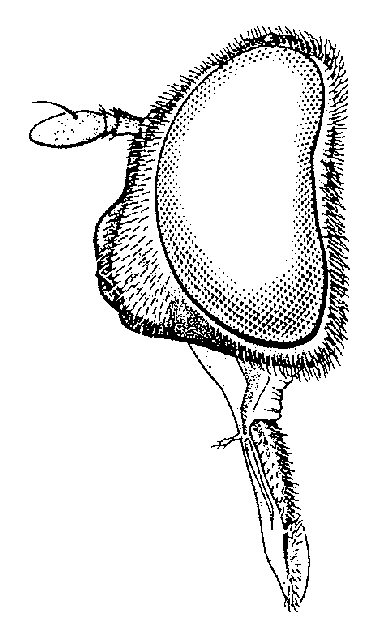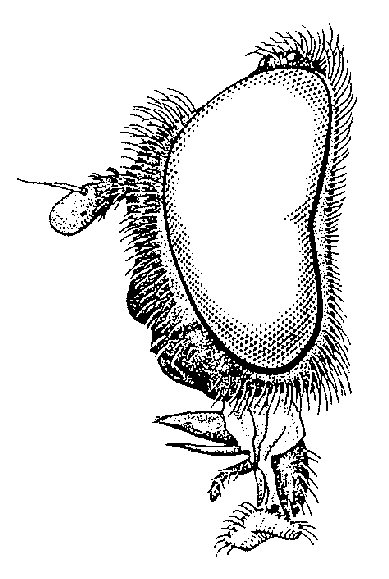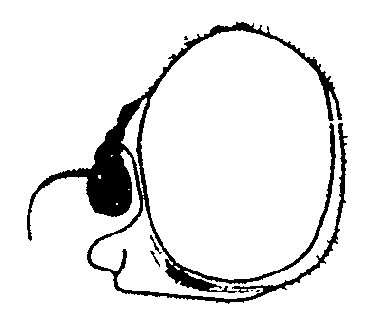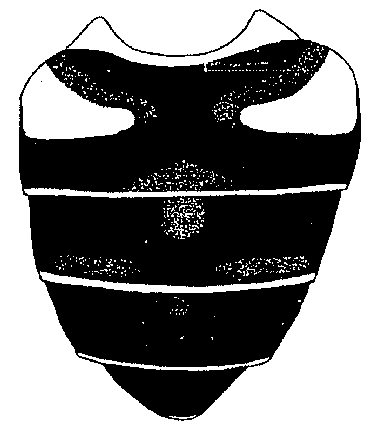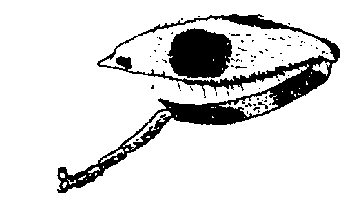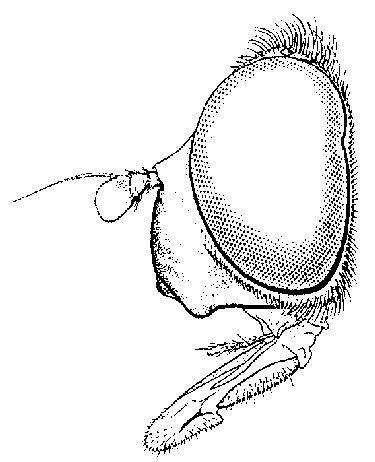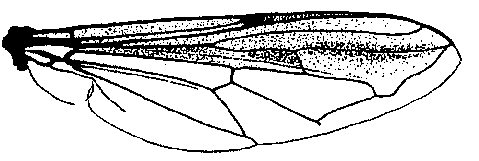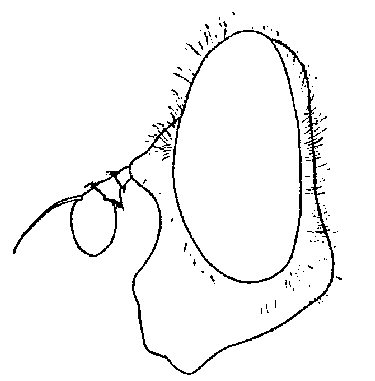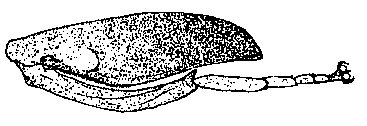|
Key to the Syrphidae of the southeastern US
Key taken from Howard Vincent Weems unpublished PhD. THE SYRPHID FLIES OF SOUTHEASTERN UNITED STATES, 1953. Red entries detail species changes and movements since then. Species immediately after the genus name are species that have not changed placements since Weems' paper appeared. Parenthetic entries show number of Weems' species and the number of current Nearctica listed species (2W [Weems], 3N [Nearctica]). Page numbers refer to pages where the genus keys appear in the original Weems' paper. Figure references are being removed with revision but figures after Fig #136 in Weems were imprint photos of actual specimens and did not reproduce well in my copy. Earlier figures are being added where useful or of good quality. Some figures are from the Nearctic Diptera volume 1 key of Vockeroth and Thompson where clarifying. The list at the end is of species added to the Syrphid group after 1953 and some of these may be southeastern and would have to be added to the keys. Species occurring strictly in the NE or Great Lakes states likely are not in the Weems' listing.
This key is under testing and revision. Expected Arkansas Species List
|
|
1. Antennae with a terminal style
M. villosus
2 1. Antennae with an arista arising dorsally on basal half of third antennal segment
2(1). Eyes pilose; third antennal segment tapering from base
C. erraticum
CALLICERA Panzer (pg. 343) (2W, 3N) Status of C. johnsoni Hunter unknown Second species probably subspecies of johnsoni
2. Eyes bare; third antennal segment variable 3
3(2). First two antennal segments short, third compressed laterally with terminal style on produced upper angle (see first image at 1) 4 3. Antennae cylindrical, first two segments elongate, third tapering and bearing a small terminal style
5
4(3). Arista slender, bristle-like (see first image at 1); large species, about 15-16 mm in length
M. villosus
MERAPIOIDUS Bigot (pg. 441) (1W, 1N) M. villosus Bigot
4. Arista stout, densely micro-pilose; small species, about 6-7 mm in length
P. pergandei
PELECOCERA Meigen (1W, 1N) P. pergandei Williston
5(3). Antennal process greatly produced, longer than first antennal segment; hypopygium often globose; metasternum membranous behind; stigmatic crossvein present but indistinct
C. abbreviata 6 5. Antennal process reduced or absent, or if present not over half length of first antennal segment (see image at 3); apex of abdomen usually pointed in both sexes; metasternum membranous behind or wholly chitin encircled
7
6(5). Abdomen thick basally, second segment but little constricted; first abdominal segment bright yellow dorso-laterally; loop of R4+5 spurred (see second image at 5); not exceptionally large species
C. abbreviata
TENTHREDOMYIA Shannon (Now CERIANA) (pg. 445) (2W, 0N) T. abbreviata (Loew) moved to CERIANA T. mime (Hull) moved to CERIANA
6. Second abdominal segment petiolate, elongate, expanded distally; first abdominal segment dark dorso-laterally; seldom spurred; exceptionally large species, 16-18 mm. in length, excluding antennae
M. floridensis
MONOCEROMYIA Shannon (pg. 449) (1W, 1N) Now M. floridensis (Shannon)
7(5). Metasternum membranous posteriorly; abdomen constricted sub-basally, but second segment not distinctly long and slender
CERIOIDES Rondani (Now SPIXIMORPHA) (pg. 443) (1W, 0N) C. signifera (Loew) now in SPHIXIMORPHA
7. Metasternum completely sclerotized; second abdominal segment distinctly slender and elongate, about three times as long as wide; resembling Polybia group of wasps
P. pedicellata
P. townsendii
POLYBIOMYIA Shannon (pg. 448) (1W, 9N) P. pedicellata Williston
8(1). Face distinctly produced forward into a long snout; R4+5 and costa meeting behind apex of wing.
R. nasica RHINGIA Scopoli (pg. 342) (1W, 1N) R. nasica Say 8 Face not distinctly produced forward into a long snout 9
9(8). R4+5 with spur extending into R5 cell; weak-flying ground-frequenting species
MICRODON Meigen (pg. 196) (21W, 31N) M. aurulentus (Fabricius) M. baliopterus Loew M. coarctatus Loew M. cothurnatus Bigot M. craigheadii Walton M. diversipilosus Curran M. fulgens Wiedemann M. fuscipennis (Macquart) M. globosus (Fabricius) M. megalogaster Snow M. ocellaris Curran M. painteri Hull M. ruficrus Williston M. rufipes (Macquart) M. scutifer Knab M. tristis Loew M. viridis Townsend M. scitula (Williston) may have moved to BLERA M. pseudoglobosus Curran likely within M. globosus M. conflictus Curran status unknown M. champlaini Curran may be within tristus
9. R4+5 without such spur
10
10(9). M1+2 with upward spur into R5 cell (see wing above); abdomen narrowed at second segment; antennae elongate
M. breviventris
MIXOGASTER Macquart (pg. 235) (8W, 3N) M. breviventris Kahl M. delongi Johnson M. johnsoni Hull M. cubensis Curran probably not Nearctic Four new species from Weems not nameable
10. M1+2 without spur into R5 cell
11
11(10). M1 strongly recurrent, a stump of M2 present, R5 cell longest in middle and usually with an appendage at this point, stigmatic crossveins absent; antennae short; eyes usually sparsely pilose, males holoptic; hind femora and tibiae without cicatrices, the tibiae usually compressed basally to a non-setate knife edge; small (5-8 mm), weak-flying ground-frequenting species
E. tuberculatus
EUMERUS Meigen (pg. 256) (2W, 3N) E. strigatus (Fallen) E. tuberculatus Rondani
11. Not having the above combination of characters 12
12(11). Abdomen dark, with two large oval yellow spots on second tergite, four spots on third tergite, and a pair of lunate spots on fourth tergite; fairly large flies (14-16 mm); R4+5 with shallow loop into R5 cell.
S. lata CONDIDEA (Now Sericomyia) Coquillett (No species in Weems' keys other than here. S. lata Coquillett in Nearctica)
12. Abdomen not so marked, not such flies 13
13(12). Antennae remarkably elongate, with first two segments almost equal in length, third segment short, less than half length of first segment; mesonotum black, with bio interrupted vittae forming four elongate, yellowish spots; scutellum broadly yellow apically; abdomen with alternating black and yellow fasciae
S. vittata
SPHECOMYIA Latreille (pg. 435) (1W, 8N) S. vittata Wiedemann
13. Antennae not remarkably elongate, or if elongate then thorax without medial pair of interrupted yellow vittae 14
14(13). Mesonotum and abdomen mostly dark, with yellow markings of short, squamose pile; wings darkened on anterior border, distinctly so on apical half of anterior border; R4+5 deeply looped into R5 cell
MEROMACRUS Rondani (2W, 4N) M. acutus (Fabricius) M. ruficrus (Wiedemann)
14. Mesonotum and abdomen without yellow markings of short, squamose pile, or if so then wings are not darkened on anterior border and R4+5 not deeply looped into cell 15
15(14) Humeri bare, or with a few hairs along posterior margin, often mostly concealed by occiput; femora simple, bases without setae; bases of tibiae rounded; r-m crossvein before middle of 1st M2 cell (except in some Baccha)
16
15. Humeri pilose; femora frequently enlarged or tibiae modified; bases of femora often with setae; position of r-m crossvein variable
16(15). Antennae fairly elongate, usually porrect, as long as or longer than distance from vertex to distal end of antennal process; abdomen convex, oval, and emarginate, with bright yellow, medially interrupted fasciae; fairly large flies (10-14 mm. in length)
C. fasciolatum
C. integre
CHRYSOTOXUM 2nd Meigen (pg. 191) (4W, 12N) C. laterale Loew C. perplexum Johnson C. pubescens Loew C. plumeum Johnson fate unknown
16. Antennae short, not as long as distance between apex of head and distal end of antennal process, or if slightly elongate (figs. 77, 81), abdomen is not convex and emarginate or flies are small (3-6 mm. in length)
17
17(16). Antennae slightly elongate, third segment about three times as long as first; shape of third segment at least three times as long as wide; front of female much narrower than face; abdomen convex and cylindrical or broad and micropunctate; broader species have trace of emargination; very small files (3-6 mm. in length)
P. haemorrhous
PARAGUS Fabricius (pg. 262) (2W, 8N) P. bicolor (Fabricius) likely returned to within angustifrons P. tibialis (Fallen) likely back to P. haemorrhous Meigen
17. Larger flies, more than 3-6 mm. in length, or if small, antennae are not at all elongate and abdomen is not convex and cylindrical or micropunctate 18
18(17). Abdomen emarginate at least upon fourth and fifth tergites, often indistinctly so, caused by a sublateral crease on sides of abdomen; in some species sublateral crease may be restricted to terminal tergites
E. volucris 19 18. Abdomen non-emarginate, tergites rolled downward laterally
19(18). Metasternum pilose, hairs sometimes scant 20 19. Metasternum bare or pubescent 21
20(19). Hypopygium greatly enlarged, shining, asymmetrical as seen from above (see right image on 18), styles very long; fifth abdominal tergite half as long fourth in female, and mesonotuni wholly dark, shining; metasternum quite pilose
E. volucris
E. volucris
EUPEODES Osten Sacken (pg. 94) (1 W, 28 N) genus includes Weems METASYRPHUS species now He places here only E. volucris Osten Sacken
20. Hypopygium not greatly enlarged, styles of normal length; metasternum sparsely pilose; if fifth tergite of female is about half as long as fourth, abdomen has sub-parallel sides and front is not whitish yellow immediately above antennae or mesonotum is yellow laterally
E. emarginatus
E. grossulariae
EPISTROPHE Walker (pg. 110) (8 Weems, 7 N) E. emarginatus (Say) E. grossulariae Meigen E. metcalfi Fluke E. nitidicollis (Meigen) E. xanthostomus (Williston) E. divisus (Williston) fate unknown E. felix (Osten Sacken) fate unknown E. invigorus (Curran) fate unknown
21(19). Abdomen oval (See left image at 18); sides of mesonotum never sharply marked with bright, opaque yellow, although in a few species sides are dull yellowish 22 21. Abdomen cylindrical, slender, spatulate or petiolate; sides of mesonotum sometimes marked with bright opaque yellow
22(21). Lower lobe of squamae pilose above
S. torvus
SYRPHUS Fabricius (pg. 80) (7 W, 12 N) S. knabi Shannon S. rectus Osten Sacken S. ribesii (Linnaeus) S. torvus Osten Sacken S. vitripennis Meigen includes Xylota bigelowi Curran S. vittafrons Shannon subspecies of ribesii
22. Lower lobe of squamae pubescent above 23
23(22). Head, particularly the front, inflated; eyes pilose; wings glassy, villi absent or nearly so
S. pyrasti SCAEVA Fabricius (Weems included this genus in the key but listed no SE species. Nearctica lists one species S. pyrasti Linnaeus)
23. Front not inflated; eyes pilose or bare; wings villose
24
24(23). Second abdominal tergite with very large, oblique spots; metasternum bare
DIDEA Macquart (pg. 118) (1W, 3N) D. fuscipes Loew
24. Second abdominal segment not with very large, oblique, yellow spots; metasternum bare or pilose 25
25(24). Eyes pilose DASYSYRPHUS Enderlein (pg. 95) (3 W, 7N) includes D. arcuata Fallen which is likely now under D. venustus Meigen and D. osburni (Curran) which is likely back in D. amalopsis Osten Sacken 25. Eyes bare 26
26(25). Metasternum bare; abdomen oval, distinctly emarginate, penis sheath ribbed
M. wiedemanni
METASYRPHUS Matsumura and Adachi (pg. 85) (8 W, 0 N) Now part of EUPEODES includes E. lapponicus (Zetterstedt) E. latifasciatus Macquart E. medius Jones E. ochrostomus (Zetterstedt) E. perplexus Osburn E. pomus (Curran) M. wiedemanni and vinelandi appear to be returned to subspecies of Eupeodes americanus Wiedemann
26. Metasternum bare or pilose; abdomen oval, indistinctly emarginate
EPISTROPHE Walker (pg. 110) (8 Weems, 7 N) E. emarginatus (Say) E. grossulariae Meigen E. metcalfi Fluke E. nitidicollis (Meigen) E. xanthostomus (Williston) E. divisus (Williston) fate unknown E. felix (Osten Sacken) fate unknown E. invigorus (Curran) fate unknown
27(21). Abdomen petiolate, base considerably constricted, emarginate only upon terminal tergites BACCHA Fabricius (pg. 160) (see 34 31) 27. Abdomen cylindrical, spatulate, or ovate-spatulate, and at least wider subapically than basally 28
28(27). Moderately large black flies, brightly marked with yellow, or with red and yellow; sides of mesonotum sharply, brightly and contrastingly marked with yellow 29 28. Not as above; comparatively slender or small flies 30
29(28). Abdomen large, cylindrical
DOROS Meigen (pg. 121) (1W, 1N) D. aequalis Loew
29. Abdomen flattened, spatulate, brightly marked with yellow, or with red and yellow XANTHOGRAMMA Mik (pg. 119) (1W, 1N) X. flavipes (Loew)
30(28). Face produced forward on lower half or two-thirds, peaked or conical, tubercle often laterally compressed
T. geminatus
MESOGRAPTA Loew (pg. 122) (19W, 0N) most of Weems species now in TOXOMERUS and many were determined not to be Nearctic TOXOMERUS species retained now including T. arethusa (Hull) T. basilaris (Wiedemann) T. boscii (Macquart) T. floralis (Fabricius) T. geminatus (Say) T. jussiaeae (Vige) T. marginatus (Say) T. politus (Say) T. parvula (Loew) T. planiventris (Loew) T. slossonae (Curran) M. arcifera (Loew) apparently not Nearctic M. duplicata (Wiedemann) probably not Nearctic M. flavocuneus (Hull) moved to subspecies of basilaris M. lachrymosa Bigot apparently not Nearctic M. mutuum (Say) fate unknown M. pulchella (Macquart) apparently not Nearctic M. subannulata (Loew) apparently not Nearctic One new species from Florida, name not established
30. Face not produced forward, short and tuberculate, or non-tuberculate and rounded and retreating in profile
B. fuscipennis
BACCHA Fαbricius (pg. 160) (see 34 (31))
31(18). Metasternum pilose, hairs sometimes scant 32 31. Metasternum bare or pubescent 34
32(31). Epistoma and subtuberculate portion of face produced forward, whole lower two-thirds of face produced and blunt, epistoma but little or not at all diagonally elevated, oral opening narrow and elongate; hypopygium greatly enlarged and usually oval-bulbous; male with abdomen cylindrical
S. robusta
SPHAEROPHORIA Lepeletier and Serville (pg. 155) (5W, 16N) S. cleoae Metcalf S. novaeangliae Johnson S. cylindrica (Say) probably within contigua S. menthastri (Linnaeus) probably within scripta S. robusta Curran probably within scripta
32. Face short, tubercle low, oral tip of epistoma less prominent forward than tubercle
33
33(32). Sides of mesonotum dark in ground color, notopleura sometimes golden pollinose or micropubescent; fourth abdominal tergite usually with oblique spots and paired medial vittae ALLOGRAPTA Osten Sacken (pg. 150) (3W, 4N) A. exotica Wiedemann A. obliqua (Say) One species only in Fl. keys
33. Sides of mesonotum yellow in ground color; fourth abdominal tergite not with oblique spots and paired medial vittae (see second face at 32)
EPISTROPHE Walker (pg. 110) (See 20)
34(31). Abdomen petiolate, constricted or narrowed subbasally, or at least narrowly spatulate or abdomen gradually and slightly widening from base; wings sometimes distinctly infuscated in part
B. elongata
O. dimidiata
O. fascipennis
O. fuscipennis
Pseudodoros clavatus
BACCHA Fabricius (pg. 160) (11W, 4N) Several of Weems Bacchus are now under new genera only Baccha nepenthe Hull remains in Baccha Ocyptamus costatus (Say) Ocyptamus dimidiata (Fabricius) Ocyptamus fascipennis (Wiedemann) Ocyptamus fuscipennis (Say) Ocyptamus gastrostacta (Wiedemann) Pseudodoros clavatus (Fabricius) B. calypso (Hull) fate unknown B. notata (Loew) not Nearctic B. obscuricornis Loew fate unknown B. scutellata (Loew) probably not Nearctic
34. Abdomen oval, or with approximately parallel sides; wings usually hyaline, or nearly so 35
35(34). Eyes pilose or bare; abdomen usually nearly cylindrical; species with predominant fascia or paired spots of brown or yellow; anterior fore femora, tibiae and tarsi always simple; face almost always yellow; sides of mesonotum usually yellowish 36 35. Eyes bare; abdomen oval or with parallel sides; face and thorax without lighter color; mostly black, brown, or metallic-black species 37
36(35). Abdomen fairly slender or with paired yellow spots; edges of abdominal tergites rolled. Now split into five genera as below. Meliscaeva with one species has a minute row of black dots on posterior edge of hindwing. Melangyna has no hairs on anterior anepisternum. Eriozona has dense eye hair.
Melangyna lasiopthalma
STENOSYRPHUS Matsumura and Adachi (pg. 99) (10W, 0 N) no longer a valid genus and Weems species divided into 5(!!) genera ERIOZONA laxa Osten Sacken MELANGYNA arctica (Zetterstedt) Melangyna cincta Fallen Melangyna fisheri (Walton) MELISCAEVA cinctella (Zetterstedt) OCYPTAMUS jactator (Loew) PARASYRPHUS genualis (Williston) Parasyrphus semiinterruptus (Fluke) S. Johnsoni Curran of Weems likely moved into Parasyrphus genualis (Williston) S. mentalis (Williston) unknown fate S. albipunctatus Curran not eastern and fate unknown
36. Abdomen oval, not slender; edges of abdomen rolled and yellow fascia entire, or indistinctly emarginate
EPISTROPHE Walker (pg. 110) (8 Weems, 7 N) (See 20)
37(35). Lower two-thirds of face produced forward and peaked, occasionally reaching beyond antennae (including subgenus Toxomerus); face usually yellowish
MESOGRAPTA Loew (pg. 122) (See split 30)
37. Face short, not produced forward and peaked or if produced forward, face is greenish black, shining, thinly covered with grayish pollen, pollen on sides forming indistinct ripples 38
38(37). Anterior tibiae of males dilated, or their basitarsi enlarged and expanded (see below), those of females usually a little widened
P. stegmus
PLATYCHEIRUS Lepeletier and Serville (pg. 181) (5W, 60+N) P. quadrata (Say) P. scamboides Curran P. scambus (Staeger) Very difficult group apparently P. erraticus Curran likely within clypeatus or hyperboreus P. peltatus (Meigen) within P. albimanus (Fabricius) Weems PYROPHAENA rosarum (Fabricius) (pg. 189) which he apparently left out of his genus key is now Platycheirus rosarum (Fabricius)
38. Anterior tibiae and tarsi simple and normal in bath sexes
M. mellinum
MELANOSTOMA Schiner (pg. 177) (3W, 6N) M. angustatum Williston M. obscurum (Say) fate unknown M. pictipes Bigot probably included in M. mellinum Linnaeus
39(15). Stigmatic crossvein usually absent; r-m crossvein wholly before middle of 1st M2 cell; relatively bare groups of flies for the most part
40 39. Stigmatic crossvein usually present; r-m crossvein usually near or beyond middle of 1st M2 cell; bare or distinctly pilose flies
40(39). M1 vein strongly recessive, costa and end of R4+5 usually quite recessive, Rs always with slender bristles; arista, with rare exceptions, plumose; metasternum always pilose; femora simple, base of hind tibiae rounded; face tends to be produced downward or rarely diagonally downward, usually with a tubercle
41
40 The r-m crossvein usually well before middle of 1st M2 cell, rarely or never beyond it; radial sector bristles, facial tubercle, and metasternal pile sometimes absent; arista rarely plumose, or if plumose, neither M1 nor costa are recessive; femoral setae usually present upon front femora, sometimes upon all femora
43
41(40). M1 only moderately recessive, costa but little or not at all recessive, second anal vein always bent and concave on anterior sides, r-m crossvein just before middle of 1st M2 cell; abdomen with one or more pairs of ob1ique or transverse yellow spots; face produced below
S. chrysotoxoides
SERICOMYIA Meigen (pg. 368) (2W, 11N) S. carolinensis (Metcalf) S. chrysotoxoides Macquart
41. M1 strongly recessive, costa and end of R4+5 usually quite recessive, second anal vein straight or concave on its posterior side, r-m crossvein always before middle 1st M2 cell; abdomen convex, oval; robust flies
V. nigra 42
42(41) Face tri-tuberculate, with swelling mesally and on each side scutellum with preapical depression; metallic greenish or bluish-green flies
O. obesa ORNIDIA Fabricius (pg. 366) (1W, 1N) O. obesa (Fabricius)
42. Face not tri-tuberculate, usually with distinct medial tubercle only; scutellum without any trace of concavity; small to large, robust species
VOLUCELLA. Geoffroy (pg. 347) (14W, 33N) V. abdominalis Wiedemann V. anastasia Hull V. barei Curran V. eugenia Williston V. nigra Greene V. pallens Wiedemann V. pusilla Macquart V. vesicularia Curran V. victoria Williston V. evecta Walker to V. bombylans Linnaeus V. americana Johnson within V. bombylans Linnaeus V. fasciata Macquart likely within V. pusilla Macquart V. vacua (Fabricius) likely not Nearctic
43(40). Face with tubercle between epistoma and antennae, although sometimes small; epistoma not sharply produced
44 43. Face without tubercle; epistoma sometimes protruding
46
44(43). M1 meeting R4+5 at or near apical margin of wing; face of males tuberculate, of females non-tuberculate; thorax and abdomen clothed with squamulae or with normal pile
M. strigilata
female male
M. varipes
MYOLEPTA Newman (pg. 334) (5W as Myiolepta, 7N) M. nigra Loew M. strigilata Loew M. varipes Loew M. pretiosa Hull probably within M. varipes Loew One new species from Weems. M. camillae Weems
44. M1 meeting R4+5 some distance back from apical margin of wing
45
45(44). Hind femora greatly thickened; lower face conically and diagonally produced forward and downward for a considerable distance, facial tubercle subordinate
C. bella
CYNORHINELLA Curran (pg. 292) (1W, 3N) C. longinasus Shannon
45. All femora comparatively quite slender; lower face not produced; eyes pilose or bare; arista plumose, pubescent, or bare
C. prima
C. sialia
C. capillata
CHEILOSIA Meigen (pg. 265) (16W, 100+N) C. caltha (Shannon) C. capillata Loew C. cyanescens Loew C. cynoprosopa Hull & Fluke C. lasiopthalma Williston C. leucoparea Loew C. pallipes Loew C. hoodiana (Bigot) C. pontiaca Shannon C. prima Hunter C. primoveris Shannon C. shannoni Curran C. swannanoa Brimley C. tristis Loew C. willistoni Snow C. slossonae Shannon likely within prima
46(43). Radial sector with slender bristles; r-m crossvein near middle of 1st M2 cell or mesonotum vittate; sometimes with strong bristles on mesonotum and scutellum
F. dives
47 46. Radial sector without bristles 48
47(46). Aeneous flies, with very strong bristles on mesonotum and scutellum (see bristles above); face barely concave on upper half
F. dives
FERDINANDEA Rondani (pg. 284) (2W, 5N) F. dives (Osten Sacken) F. nigripes (Osten Sacken)
47. Not aeneous species, usually luteous in color; mesonotum usually vittate; mesonotum and scutellum only with strongly developed pile; femora and tibiae more slender with less heavy spines; antennae located below middle of eyes
B. vacua BRACHYOPA Meigen (pg. 286) (8W, 14N) B. daeckei Johnson B. diversa Johnson B. flavescens Shannon B. media Williston B. nigricauda Curran B. notata Osten Sacken B. perplexa Curran B. vacua Osten Sacken
48(46). Face straight or receding in profile, epistoma never produced, eyes pilose; hind femora simple, or rarely a little swollen, sometimes microdenticulate distally; M1 never meeting R4+5 at apical margin of wing. Weems' species now divided into several genera. Heringia has a ventral spur on the hind trochanter. Pipiza has simple hind trochanters. Trichopsomyia has long erect hairs on the anterior anepisternum.
P. femoralis
P. quadrimaculata
P. femoralis
PIPIZA Fallιn (pg. 294) (15W, 16N) P. femoralis Loew P. nigripilosa Williston P. quadrimaculata (Panzer) Some species moved to new genera TRICHOPSOMYIA T. apisaon (Walker) T. australis (Johnson) T. banksi (Curran) T. recedens (Walker) Some species moved to genus HERINGIA H. salax (Loew) Some species moved to NEOCNEMODON N. calcarata (Loew) N. cevelata (Curran) N. coxalis (Curran) N. intermedia (Curran) N. myerma (Curran) N. pisticoides Williston N. squamulae (Curran)
48. Face either concave and produced diagonally forward upon lower half, or face straight above with epistoma projecting (see third and fourth faces below), or antennal prominence broadly and distinctly produced; hind femora simple, or if thick, they are very thick and denticulate
Myolepta camillae
49
49(48). Front produced into a rather conspicuous antennal protuberance; eyes dichoptic in male; scutellum subrectangular; apex of abdomen asymmetrical to the right in male
L. aerea LEJOTA Rondani (pg. 341) (1W as Leiota, 2N) L. aerea (Loew)
49. Front not remarkably produced into antennal protuberance; scutellum not subrectangular; apex of abdomen not conspicuously asymmetrical in male 50
50(49). M1 usually meeting R4+5 at or very near apical margin of wing; face concave upon upper half, projecting bluntly, obconically, and diagonally forward upon lower half, male face usually with a tubercle (see paired faces at 48); hind femora moderately thickened, usually spinose below; head, thorax or abdomen, or all three, sometimes clothed with flattened squamulae, sometimes with short, soft or setaceous pile
M. strigilata MYOLEPTA Newman (pg. 334) (5W as Myiolepta, 7N) M. nigra Loew M. strigilata Loew M. varipes Loew M. pretiosa Hull probably within M. varipes Loew One new species from Weems.
50. M1 meeting R4+5 distinctly before apical margin of wing; face straight or slightly concave upon upper half, but epistoma always slightly to distinctly produced forward; antennae short or long, never with flattened squamulae
51
51(50). Small (3.5-5 mm. in length), slander, nearly bare, black or metallic green flies, with or without reddish or yellow on abdomen; antennae often slightly elongate, third segment elongate, with bare arista near middle (see first face above at 50); eyes bare, without linear patterns; wings with outer backward angle of R5 cell almost rectangular
N. globosa
N. metallica
NEOASCIA Williston (pg. 332) (4W, 10N) N. albipes (Bigot) N. distincta Williston N. globosa (Walker) N. metallica (Williston)
51. Larger flies (more than 5 mm. in length), or with abdomen broadly oval, flattened or convex; eyes pilose or bare, sometimes with distinct linear patterns; antennae elongate or short
52
52(51). Abdomen elongate, slender, usually constricted subbasally, often quite petiolate; epistoma quite often considerably produced (see face at 51); antennae always short, third segment round or short-oval; arista usually pubescent, longer than third antennal segment; lower angle of R5 cell rounded; eyes bare
S. lobata
S. keeniana
SPHEGINA Meigen (pg. 319) (11W, 22N) S. biannulata Malloch S. campanulata Robertson S. flavimana Malloch S. flavomaculata Malloch S. infuscata Loew S. keeniana Williston S. lobata Loew S. lobulifera Malloch S. rufiventris Loew S. brimleyi Shannon likely within infuscata Loew S. monticola Malloch status unknown
52. Abdomen short, oval, compact or flattened; antennae short or often quite elongate; eyes pilose or bare, sometimes with distinct maculation
O. nitida 53
53(52). Eyes densely pilose; face straight and retreating to epistoma, which is produced a short distance; antennae short or moderately long; abdomen convex, oval; spurious vein absent
P. thatuna
PSILOTA Meigen (pg. 317) (2W, 3N) P. buccata (Macquart) P. thatuna Shannon
53. Eyes bare, unicolorous, unimaculate, or with zig-zag or tortuously winding maculation, particularly brilliant in life (see face at 52); abdomen oval, usually wide, and much flattened; spurious vein usually present, although often faint
C. antitheus
O. pulchella
CHRYSOGASTER Meigen (pg. 309) (7W, 12N) C. inflatifrons Shannon C. texana Shannon Some species moved to ORTHONEVRA 2nd O. nitida (Wiedemann) O. pictipennis (Loew) O. pulchella (Williston) C. nigripes Loew reverted to C. antitheus Walker C. greenei Shannon likely reverted to within C. texana Shannon
54(39). All femora with well-developed basal patches of setae, hind tibiae usually with knife-edge; metasternum always pilose.; R4+5 always with loop, 2A strongly bent, anterior side concave, radial sector bristles usually present
55 54. Only first or second femora with femoral setae; hind tibiae often with knife-edge upon basal third; metasternum with or without pilo; usually without deep loop, although characteristically sinuous, radial sector bristles occasionally present
55(54). R1 cell always closed (see first two wings at 54); sparsely to thickly pilose flies; abdomen variously marked with light and dark fascia or spots. Divided into three genera now. Palpada always have bare arista and have eye hair above. Eristalinus has dark spots on the eye. Most Eristalis have densely hairy eyes.
P. agrorum P. albifrons
E. arbustorum E. dimidiatus
E. saxorum E. transversus
ERISTALIS Latreille (pg. 472) (15W, 23N) E. arbustorum 2nd Linnaeus E. barda (Say) E. dimidiata Wiedemann E. obscurus Loew E. saxorum Wiedemann E. tenax (Linnaeus) E. texanus Hull E. transversa Wiedemann E. bastardii Macquart probably within E. barda (Say) E. latifrons Loew reverted to E. stipator Osten Sacken E. aeneus (Scopoli) moved to ERISTALINUS Rondani Some species moved to PALPADA Macquart P. agrorum (Fabricius) P. albifrons Wiedemann P. vinetorum (Fabricius) One new species named by Weems status unknown.
55. R1 cell always open
56
56(55). M1 strongly recurrent (see first wing just above); arista bare; hind femora much thickened, bearing large lateral plate apically which may have one or more teeth; robust, shaggy, long-pilose flies
MERODON Meigen (pg. 469) (1W, 1N) M. equestris Fabricius
56. M1 never recurrent (see second wing at 55); hind femora slender or thick, but without plate bearing a tooth
57
57(56). Stigmal crossvein absent (see second wing at 55); hind femora without spur; thorax vittate HELOPHILUS Meigen (pg. 450) (2W, 33N) H. fasciatus Walker H. latifrons Loew
57. Stigmal crossvein present, or in last stages of development; hind femora with or without spur; thorax with or without vittae
M. posticata 58
58(57). Face usually deeply produced below, fronto-antennal region never prominent, face not attenuated and conical; thorax unicolorous; abdomen densely pilose; rather large, woolly, long-pilose flies (see wing just above)
M. posticata
M. bautias MALLOTA Meigen (pg. 464) (5W, 11N) M. bautias (Walker) M. bipartita (Walker) M. mississippiensis Hull M. posticata (Fabricius) M. separata Hull
58. Face not deeply produced below, fronto-antennal region sometimes prominent; rather short-pilose flies
L. currani 59
59(58). Abdomen broad and comparatively flat in both sexes, usually short, oval, not twice as long as wide; hind tibiae truncate at apex
H. laetus male
PARHELOPHILUS Girschner (pg. 460) (5W, 0N) All Weems' species moved to HELOPHILUS H. anniae (Brimley) H. divisus (Loew) H. flavifacies (Bigot) H. integer (Loew) H. laetus (Loew)
59. Abdomen comparatively slender and subcylindrical, especially in male, with parallel sides or tapering, over twice as long as wide; hind tibiae produced below at apex
H. currani
LEJOPS Rondani Now in HELOPHILUS (pg. 452) (5W, 0N) All Weems' species moved to HELOPHILUS L. chrysostomus (Wiedemann) L. distinctus (Williston) L. orion Hull L. relictus Curran and Fluke One new species from Weems fate unknown
60(54). Face tricarinate, not jutting out beyond base of antennae, keel vertical and straight, or slightly convex; hind femora swollen, greatly enlarged; wings hyaline, with R4+5 and M1 meeting before apex of wing near costal border, stigmal crossvein absent; medium-sized (8-12 mm. in length), nearly bare species, chiefly black, with yellow or orange markings on abdomen
T. quadrata
T. quadrata
TROPIDIA Meigen (pg. 400) (4W, 8N) T. albistylum Macquart T. calcarata Williston T. mamillata Loew T. quadrata (Say)
60. Face never with well-developed medial keel and lesser face cheek keels; without above combination of characters 61
61(60). Mesonotum and abdomen wholly and fairly thickly long pilose; metasternum pilose; third antennal segment deeper than long, face produced below
C. verbosa CRIORHINA Meigen (pg. 437) (3W, 15N) C. nigriventris Walton C. verbosa (Walker) C. intermedia Johnson likely within nigriventris Walton
61. Mesonotum and abdomen not wholly and thickly long or if moderately or thickly pilose, metasternum is pubescent; antennal segment usually oval or elongate, longer than deep 62
62(61). Hind femora greatly swollen, with numerous spines below, black, with base and a usually incomplete ring near middle reddish yellow; rather small, slender flies (about 7-8 mm. in length), nearly bare, black, with yellow markings; head hemispherical, face weakly carinate or with obtuse, longitudinal ridge, never with a keel, epistoma s1ightly produced; scutellum thin on its edge
S. pipiens
SYRITTA Lepeletier and Serville (pg. 398) (1W, 2N) S. pipiens (Linnaeus)
62. Not such flies; face not carinate or ridged; hind femur slender or swollen, never colored as above 63
63(62). Third antennal segment as deep as or deeper than long, typically obliquely oval; face concave, eyes of male narrowly separated; lower face diagonal, elongate and subtruncate; metasternum pubescent; scutellum with ventral fringe; hind femora elongate, thick, tibiae excavated basally; medium to large (7-16 mm. in length), elongate, rather long pilose flies, sometimes thickly short pilose on mesonotum and sparsely pilose, shining bluish or black on abdomen
B. oarus
B. femoratus
B. oarus
BRACHYPALPUS Macquart (pg. 390) (5W, 8N) B. amithaon (Walker) B. margaritus Hull B. oarus (Walker) Several moved to CHALCOSYRPHUS C. inarmatus (Hunter) C. metallifera (Bigot)
63. Third antennal segment either orbicular or elongate; almost exclusively short pilose, rather bare flies, occasionally long pilose at base of abdomen; not having above combination of characters 64
64(63). The r-m crossvein quite oblique, and near end of 1st M2 cell, Cu1 cell with very long petiole drawn out along wing margin; large flies (11-12 mm), often brightly marked
65
64. The r-m crossvein less oblique and at or slightly beyond middle of 1st M2 cell, Cu1 cell with short straight petiole; brightly colored or somber files
66
65( 64). Hind femora slender, with an sub-apical tooth; eyes with vertical, irregular stripes or blotches; first and second antennal segments slightly to distinctly elongate; metasternum with an obtuse blunt spur anteriorly; wasp-like flies
S. hamifera
SPILOMYIA 2nd 3rd Meigen (pg. 419) (5W, 13N) S. fusca Loew S. longicornis Loew S. texana Johnson S. hamifera Loew status unknown S. quadrifasciata (Say) status unknown
65. Hind femora often thickened, with or without subapical tooth; eyes uniformly colored; antennae scarcely or not at all elongate; face usually concave, front produced; R1 cell closed, M1 and R4+5 meeting near costal border before apex of wing; R4+5 gently looped into R5 cell; large (16-21 mm), brightly-colored flies
M. virginiensis
MILESIA Latrelle (pg. 415) (2W, 3N) M. scutellata Hull M. virginiensis (Drury)
66(64). Bright, yellow-pollinose, wasp-like flies, with yellow-pollinose markings on thorax and abdomen; first and second antennal segments always quite short; face usually quite concave, especially in females, less so in males; males often with weak tubercle, face never deeply produced; anterior wing border dark
TEMNOSTOMA Lepeletier and Serville (pg. 425) (9W, 10N) T. acra Curran T. alternans Loew T. balyras Walker T. excentrica Harris T. trifasciatum Robertson T. venustum Williston T. pictulum Williston possibly within excentrica Harris T. apiforme (Fabricius) likely within vespiformis Linnaeus
66. Never yellow pollinose, although sometimes marked with yellow 67
67(66). Abdomen with large transverse or oblique yellow spots on at least second, third and fourth tergites; fronto-antennal region moderately to greatly produced; face deep, nearly straight, but slightly concave; M1 and R4+5 meeting before apical margin of wing, anterior wing border dark
SOMULA Macquart (pg. 412) (2W, 2N) S. decora Macquart S. mississippiensis Hull
67. Abdomen not with large, transverse or oblique, yellow spots on second, third and fourth tergites 66
68(67). Metasternum pubescent; lower face usually prominent; abdomen wholly shining black or with yellowish markings; legs never greatly thickened; M1 and R4+5 confluent at or near apex of wing
B. umbratilis
B. confusa
B. badia
CYNORHINA Williston Now BLERA (pg. 404) (10W, 0N) All Weems' species moved to BLERA B. analis (Macquart) B. badia (Walker) B. confusa (Johnson) B. metcalfi (Curran) B. nigra (Williston) B. notata (Wiedemann) B. pictipes (Bigot) B. umbratilis (Williston)
68. Metasternum pilose or pubescent; third antennal segment sometimes moderately elongate; hind femora sometimes swollen; face concave; mostly dark, metallic flies 69
69(68). Metasternum pubescent 70 69. Metasternum pilose 71
70(69). Posterior margins of abdominal tergites with thick, matted, subappressed border of pile; large, aeneous or cupreous flies with dense, short, brownish-yellow or golden pile; abdomen with aeneous crossbands
CHRYSOSOMIDIA Curran (pg. 395) (1W, 0N) C. aepalius (Walker) moved to HADROMYIA
70. Posterior margins of abdominal tergites not with conspicuous, matted borders of pile; less strikingly metallic flies, abdomen not opaque black with brilliant metallic crossbands
X. barbatus
XYLOTA Meigen (pg. 371) (18W, 29N) X. analis Williston X. angustiventris Loew X. annulifera Bigot X. artemita Hull X. bicolor Loew X. ejuncida Say X. hinei (Curran) X. quadrimaculata Loew Most moved to CHALCOSYRPHUS 2nd X. baton Walker probably moved to within CHALCOSYRPHUS as C. nemorum Fabricius Also: C. althaea (Hull) C. anthreas (Walker) C. astarte (Hull) C. libo (Walker) C. metallica (Wiedemann) C. pigra (Fabricius) C. primavera (Hull) C. vecors (Osten Sacken) X. chalybea Wiedemann status unknown
71(69). Hind femora compressed below on distal third or more into narrow, spiniferous ridges, straight but much thickened (figs. 113); abdomen not constricted basally
XYLOTA Meigen (pg. 371) (see above)
71. Hind femora rounded below, without ridge; abdomen somewhat narrowed basally, especially in female
72
72(71). Mesonotum ochraceous pollinose, thickly short brownish-yellow pilose (and left leg just above) PTERALLASTES Loew (pg. 442) (1W, 1N) P. thoracicus Loew 72. Mesonotum not ochraceous pollinose 73
73(72). Abdomen wide, flattened, scutellar fringe virtually absent; hind femora moderately thickened, hind tibiae with medial internal spur in male (right leg above and from Nearctic below)
T. literatus
TEUCHOCNEMIS Osten Sacken (pg. 397) (2W, 2N) T. bacuntias (Walker) T. literatus (Loew)
73. Abdomen not especially widened and flattened; scutellar fringe well developed; bind femora considerably thickened, lower portion of face rather compressed laterally, the cheek-face angles distinct
BRACHYPALPUS Meigen (pg. 390) (5W, 8N) B. amithaon (Walker) B. margaritus Hull B. oarus (Walker) Several moved to CHALCOSYRPHUS C. inarmatus (Hunter) C. metallifera (Bigot)
Species added after 1953 Unknown which, if any, are also eastern.
Chalcosyrphus cascadensis Weems 1965
Chrysogaster anniae Sedman 1966
Copestylum vittatum Thompson 1976
Eristalis beltrami Telford 1970 Eristalis californicus Nayar and Cole Eristalis vandykei Nayar and Cole
Helophilus colei Wirth 1965
Mallota bequaerti Hull 1956
Melangyna coei Nielsen 1971 Melangyna vespertina Vockeroth 1980
Microdon abditus Thompson 1981 Microdon abstrusus Thompson 1981 Microdon adventitious Thompson 1981 Microdon albicomatus Novak 1977 Microdon carolae Capelle 1956
Ocyptamus loewi Sedman 1965
Paragus angustistylus Vockeroth 1986 Paragus arizonensis Vockeroth 1986 Paragus bispinosus Vockeroth 1986 Paragus cooveri Vockeroth 1986 Paragus longistylus Vockeroth 1986 Paragus variabilis Vockeroth 1986
Parasyrphus bulbosus Fluke 1954
Platycheirus hesperius Vockeroth 1990 Platycheirus hispidipes Vockeroth 1990 Platycheirus holarcticus Vockeroth 1990 Platycheirus jaerensis Nielsen 1971 Platycheirus latitarsis Vockeroth 1990 Platycheirus nearcticus Vockeroth 1990 Platycheirus nielseni Vockeroth 1990 Platycheirus octavus Vockeroth 1990 Platycheirus orarius Vockeroth 1990 Platycheirus oreadis Vockeroth 1990 Platycheirus pilatus Vockeroth 1990 Platycheirus protrusus Vockeroth 1990 Platycheirus pullatus Vockeroth 1990 Platycheirus rufigaster Vockeroth 1990 Platycheirus rufimaculatus Vockeroth 1990 Platycheirus russatus Vockeroth 1990 Platycheirus sabulicola Vockeroth 1990 Platycheirus setipes Vockeroth 1990 Platycheirus setitarsis Vockeroth 1990 Platycheirus spinipes Vockeroth 1990 Platycheirus stegnoides Vockeroth 1990 Platycheirus striatus Vockeroth 1990 Platycheirus thompsoni Vockeroth 1990 Platycheirus woodi Vockeroth 1990 Platycheirus yukonensis Vockeroth 1990
Sphaerophoria asymmetrica Knutson 1973 Sphaerophoria bifurcata Knutson 1973 Sphaerophoria brevipilosa Knutson 1973 Sphaerophoria longipilosa Knutson 1973 Sphaerophoria weemsi Knutson 1973
Sphecomyia columbiana Vockeroth 1965 Sphecomyia fusca Weisman 1964
Spilomyia citima Vocekroth 1958 Spilomyia foxleei Vockeroth 1958 Spilomyia oregonensis Nayar and Cole 1968 Spilomyia sayi Goot 1964
Syrphus sonorensis Vockeroth 1983
|

















































